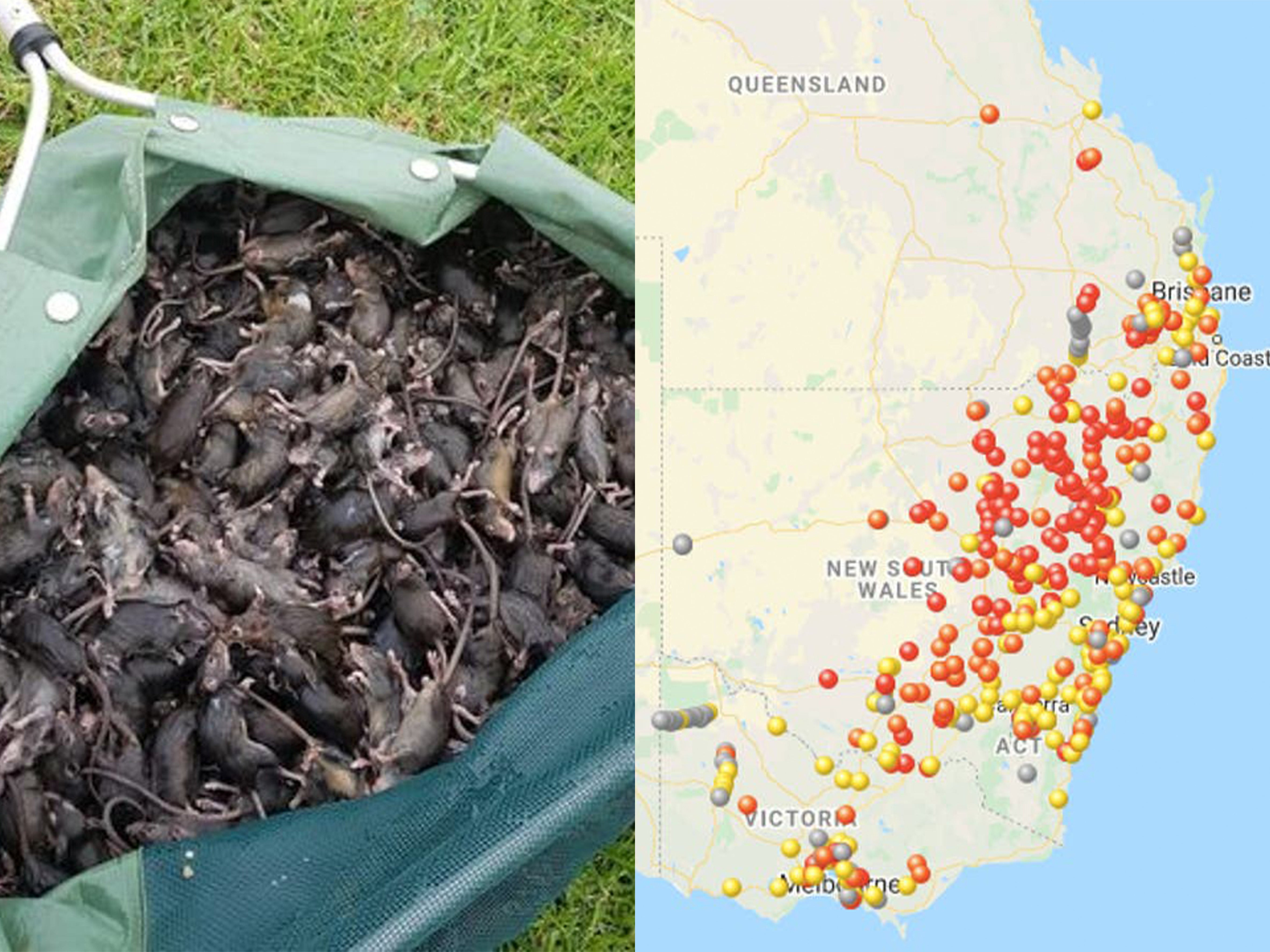‘A significant problem’: Map shows extent of Australia mouse plague
Millions of rodents have caused extensive destruction on farms

Your support helps us to tell the story
From reproductive rights to climate change to Big Tech, The Independent is on the ground when the story is developing. Whether it's investigating the financials of Elon Musk's pro-Trump PAC or producing our latest documentary, 'The A Word', which shines a light on the American women fighting for reproductive rights, we know how important it is to parse out the facts from the messaging.
At such a critical moment in US history, we need reporters on the ground. Your donation allows us to keep sending journalists to speak to both sides of the story.
The Independent is trusted by Americans across the entire political spectrum. And unlike many other quality news outlets, we choose not to lock Americans out of our reporting and analysis with paywalls. We believe quality journalism should be available to everyone, paid for by those who can afford it.
Your support makes all the difference.An interactive map allowing people to report mouse sightings has revealed the extent of the rodent plague in Australia.
Millions of mice have been causing extensive destruction on farms in eastern Australia over the last few months as they gnaw through crops and stored grain.
The fast-breeding animals have also forced supermarkets to store food in sealed containers and have even bitten several hospital patients.
A map created by the Commonwealth Scientific and Industrial Research Organisation (CSIRO) and the NSW government allows farmers and grain producers to report mice sightings.
The CSIRO’s March report said mouse numbers were “moderate to high in many regions of southern Queensland; northern, central and southern NSW; north-western Victoria; parts of South Australia and around Ravensthorpe, WA.”
The repot warned that mice have “continued to breed through summer/autumn, to reach a peak at sowing of winter crops” and added that it is “unclear what impact recent rainfall will have on populations”.
It also said “mouse numbers are low in other areas, but patchy”.
The map on the MouseAlert website and app is broken down by mouse activity, with red indicating high activity, orange medium and yellow low. Grey dots indicate sightings have been reported but prevalence was not assessed.
Several red circles appear across the east coast of Australia, indicating a high number of rodents are present.
“Mice are a significant problem in Australia, causing severe economic, social and environmental damage during plagues,” the website says.
“Grain growing areas suffer damage to crops and to stored grain; rural businesses suffer damage from mice chewing stock and electrical wires; rural communities experience high levels of stress through the constant presence of mice. Damage occurs to a wide array of crops.
“MouseAlert is a community resource that can be used by anyone to record observations of mice. Information you record can be used to manage mice more effectively to reduce the damage they cause and plan for control activities.”
Australia’s rodent plague has led the government to grant an emergency permit to allow double-strength bait to be used.
Videos posted on social media have illustrated the sheer scale of the problem, with footage showing dead and living mice raining down from farming machinery or swarming around farms.
Australia has frequently been hit by plagues of the rodents, which can produce an average of up to 500 offspring per season. The worst, in 1993, caused an estimated AUS$96m (£54m) in damage to crops, machinery and animals.
Join our commenting forum
Join thought-provoking conversations, follow other Independent readers and see their replies
Comments